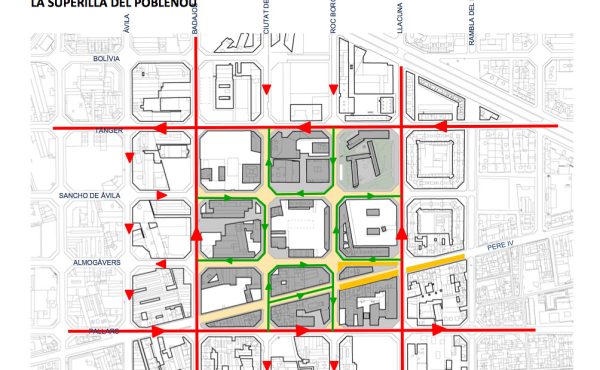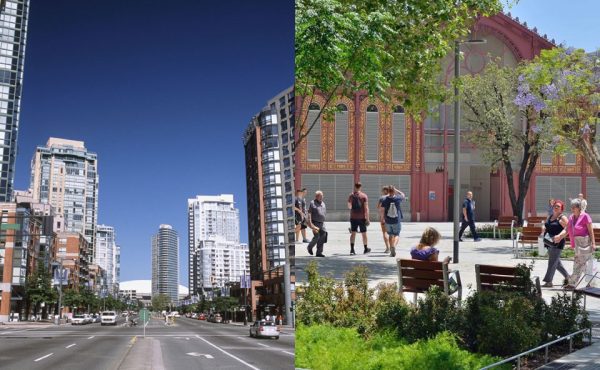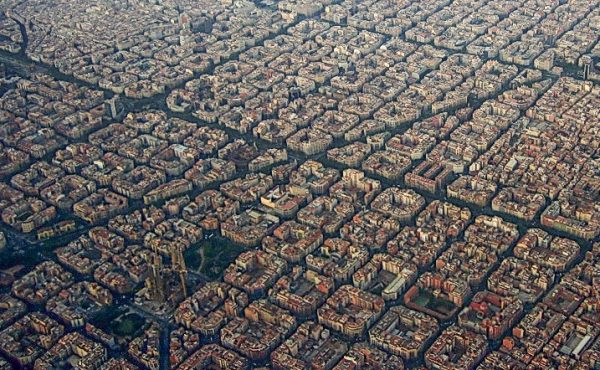In an urban setting it is easy to get lost in the everyday of concrete, cement and asphalt. Colour becomes a beacon that cuts through the grey and entices our eye. Colour illumination is actually an important part of Vancouver’s social and built history. From its rise in the 1930’s to its decline 30 years later, Vancouver’s neon era speaks of how social views impact the built heritage of a city.
Vancouver embraced neon completely when it first arrived. Whether enhanced by the newness of the product and its eye-catching properties, or the comforting glow that made city nightscapes less intimidating, by the 1950’s there was 1 sign for every 18 residents in the Lower Mainland. That’s an astounding 18,000 signs! Awash in a riot of multicoloured signs, heightened by the rain covered pavement, Granville Street became the centre of the colour boom, drawing people from around the globe to the warm glow of neon. The Smilin’ Buddha, the Helen’s swing girl, the Sun Tower outlined in light, all became synonymous with Vancouver. But it wouldn’t last as the changing views of the 1960’s brought about the end of neon’s reign. The preference for clean wholesome suburbia was in conflict with the flashy glow of neon, and soon the electric glow was no longer seen as inviting and pleasurable, but as an indication and even cause of social decay.
Responding to public concerns about the ‘bad element’ being drawn to neon, city by-laws soon limited the size and scale permitted in street signage, returning the downtown to its previous dimly-lit state. Interest in visiting the downtown core at night soon weakened as well, likely because we no longer had the wonderful, coloured glow to inspire and excite us. Many of the signs were lost to demolition while others have ended up in collections, at the MOV, or in shop basements.
In recent years however, neon has seen a rebirth. The draw of downtown living has once again turned public perception towards reviving that riot of colour Vancouver was once known for. The Stanley Theatre, Dunn’s Tailors and the cheerful pig on top of Save-on-Meats are all welcome restorations to Vancouver’s night life. We are once again embracing the vivid hues and oversized signage as a part of Vancouver’s sense of place, and celebrating the built environment that makes Vancouver unique.
Join us January 29th at 7:30pm as we celebrate Vancouver’s neon history with a screening of “Glowing in the Dark”, a documentary film about the heyday of neon. Local historian and neon expert John Atkin will be joining us afterwards for a Q&A period.
We’ll be at the historic Hollywood Theatre at 3123 W Broadway. Entry and concession are by donation with all proceeds going towards the research, design and production of a historic map guide of Kitsilano. Visit our website for more information about this film screening, which is part of VHF’s Gritty City: Vancouver in the 60’s film festival.
www.vancouverheritagefoundation.org
Sources:
“Neon!” John Atkin. The Vancouver Book. Chuck Davis. Linkman Press“Light Zone City: Light Planning in the Urban Context”. Christa Van Santen. Birkhouse, 2006.
Photo Credit:
“Sun Building at Night”. September 17, 1946, Dominion Photo Co. VPL 27181.



